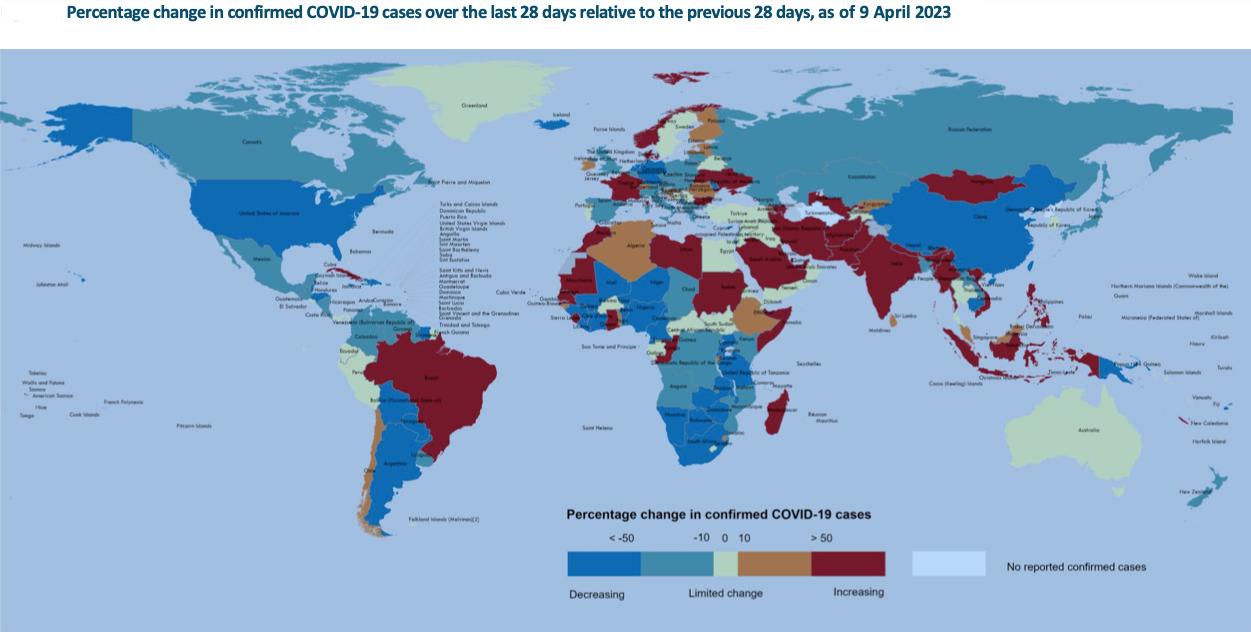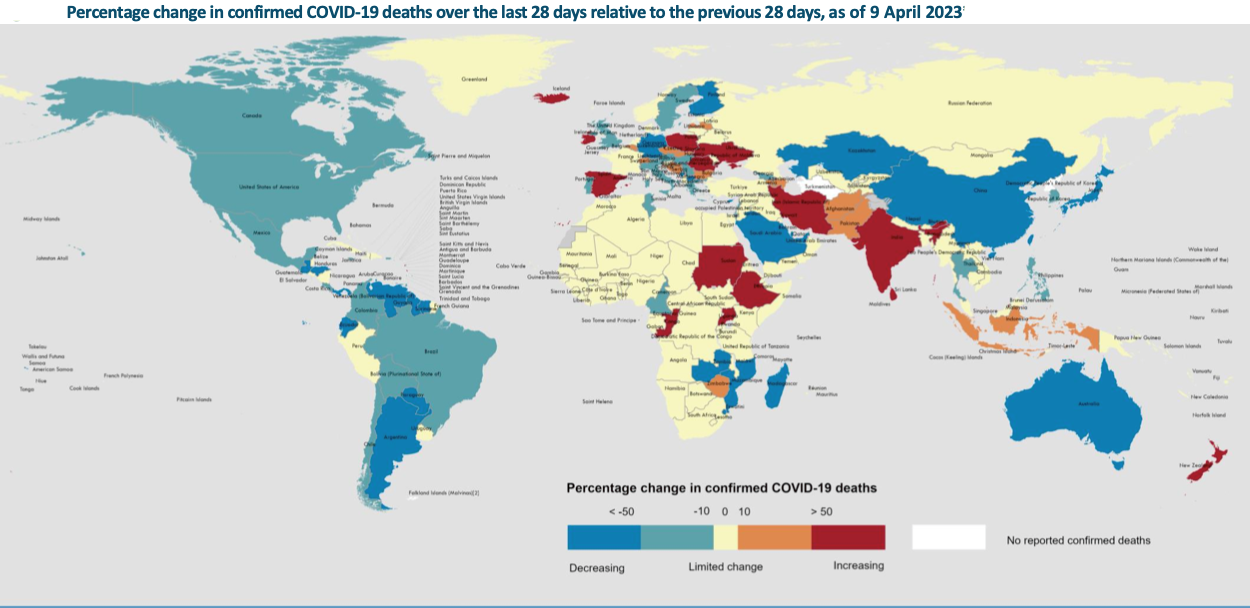
Geneva/New Delhi: Seven (64%) of the 11 countries in the World Health Organization’s South East Asia region for which data are available reported increases in new COVID-19 cases of 20% or greater, with the highest proportional increases observed in Nepal (636 versus 49 new cases; +1198%), India (66124 versus 6374 new cases; +937%) and the Maldives (150 vs 21 new cases; +614%) during a period of 28 days from March 13 to April 9, 2023, as compared to the previous 28-day period (February 13 to March 12, 2023).
The highest numbers of new cases in the region during this period were reported from India (66 124 new cases; 4.8 new cases per 100 000; +937%), Indonesia (12 101 new cases; 4.4 new cases per 100 000; +93%), and Thailand (663 new cases; <1 new case per 100 000; -2%).

The number of new 28-day deaths in the region increased by 109% as compared to the previous 28-day period, with 309 new deaths reported. The highest numbers of new deaths were reported from India (184 new deaths; <1 new death per 100 000; +494%), Indonesia (104 new deaths; <1 new death per 100 000; +24%), and Thailand (16 new deaths; <1 new death per 100 000; -47%).

Overall, the World Health Organization’s South-East Asia Region reported over 80,000 new cases, a 481% increase in 28 days from March 13 to April 9, 2023, as compared to the previous 28-day period (13 February to 12 March 2023), and the Eastern Mediterranean Region ( which showed over 52,000 new cases – a 145% increase during the period as compared to the previous 28-day period and a 138% increase in the number of new deaths in 28 days there as compared to the previous 28-day period, with 718 new deaths reported).
Globally, however, there was a 28% decrease in new cases (3 million new cases) and 30% decrease in deaths (over 23000 deaths) during the period compared to the previous 28 days. The number of newly reported 28-day cases decreased across four other WHO regions: the African Region (-45%), the Western Pacific Region (-39%), the Region of the Americas (-33%), and the European Region (-22%).
Currently, WHO said it is closely tracking one variant of interest (VOI), XBB.1.5, which has been detected in 95 countries and continues to be the most prevalent variant, accounting for 47.9% of cases in epidemiological week 12 (20 to 26 March 2023) compared to 39.8% in week 8 (20 to 26 February 2023). Besides, WHO is also tracking seven variants under monitoring (VUMs) and their descendent lineages. The VUMs are BA.2.75, CH.1.1, BQ.1, XBB (excluding XBB.1.5, XBB.1.16* and XBB.1.9.1), XBB.1.16*, XBB.1.9.1, and XBF.
There are currently no reported laboratory or country reports associating the VOI and VUMs with increased disease severity. A recent laboratory study on XBB.1.16 shows the variant to have an increased growth rate compared to XBB and XBB.1.5 respectively. However, WHO said today that their immune evasion characteristics are similar.
At the country level, the highest numbers of new 28-day cases were reported from the United States of America (455 939 new cases; -50%), the Russian Federation (291 895 new cases; -17%), the Republic of Korea (275 126 new cases; similar to a previous 28-day period), Brazil (233 734 new cases; +51%), and France (213 308 new cases; +92%). The highest numbers of new 28-day deaths were reported from the United States of America (5571 new deaths; -40%), the United Kingdom (2708 new deaths; -13%), Brazil (1246 new deaths; -24%), the Russian Federation (984 new deaths; – similar to a previous 28-day period), and Germany (903 new deaths; -52%).
-global bihari bureau







